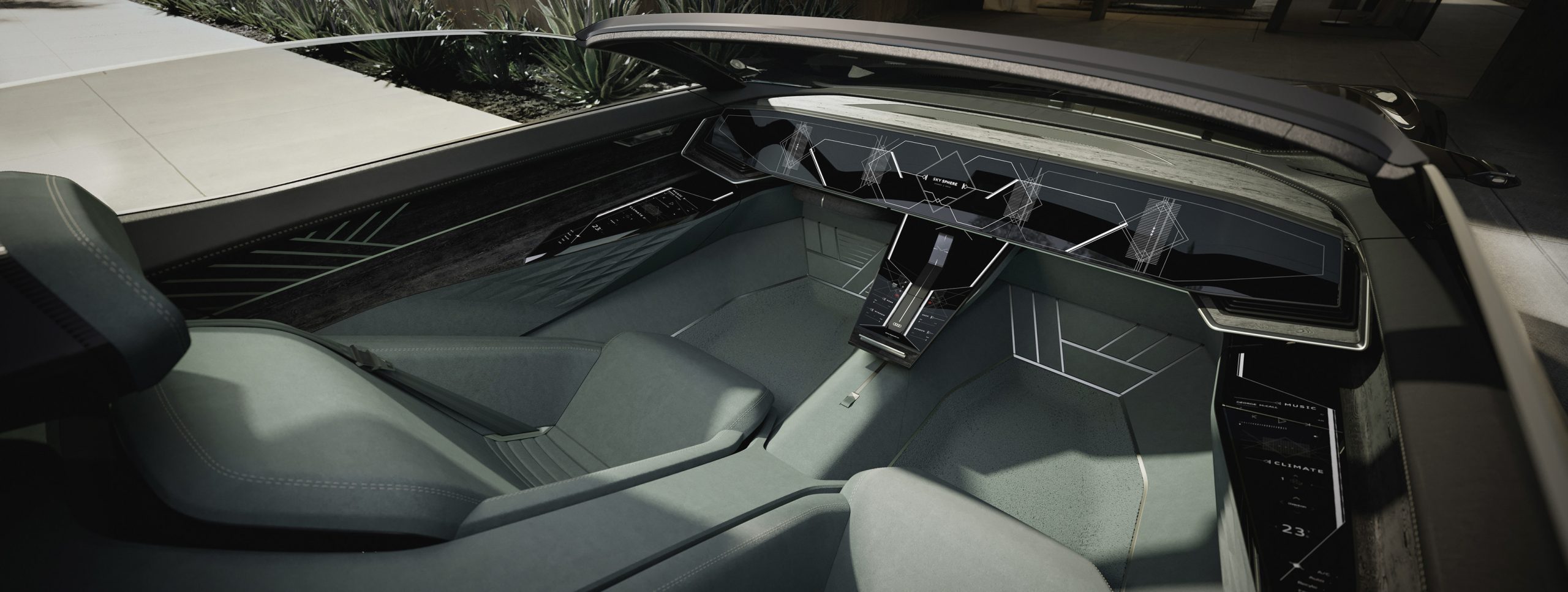Goldstuck on Gadgets
Towards touch everywhere
Touch-screen interfaces are one thing; touch interfaces overlaid on every surface is a vision ARTHUR GOLDSTUCK found in the Audi A3 and Q2
Sometimes the most obvious controls in a car are the most difficult to find.
This thought came to mind while test-driving the Audi A3, when something as simple as a volume control for music seemed to be missing from the central console. Yes, the driver can manage it easily from the volume button built into in the steering wheel controls, but passengers as often need to take over the infotainment.
It is not totally hidden, of course, but contained in the On/Off button, which also doubles as a Rewind/Fastforward button. And a volume control. Except that the volume is not pushed up or down by the push of the button. Rather, one slides ones finger over the surface of the button, clockwise to increase volume, anti-clockwise to turn it down.

This immediately brings to mind an even more dramatic example of using a regular button-style control as a touch surface. On the Audi Q2, the control wheel on the centre console is ostensibly intended to make it easy to scroll through menus on the dashboard-mounted screen. However, it comes into its own when using on-board navigation. Like the second screen on high-end Audis, and the touchscreen on the A3, it allows one to write letters and numbers using one’s index finger. In other words, the scroll wheel has an integrated touchpad, even though it doesn’t have a screen.
Between the A3 and the Q2, one can see the versatility of what Audi called its MI touch concept. This is how the manufacturer describes it:
“On certain models, this involves a round rotary/pushbutton control in the centre console which features a touchpad on its surface. The touchpad is used to input characters and also for multi-finger gestures, enabling the driver to zoom in on the map, for example.
“Buttons around the edge supplement the terminal. The larger MMI all-in-touch is available as another version: The driver can write, zoom and scroll on its glass surface and receives acoustic and haptic feedback each time a command is input.
“In some cases, the MMI touch also comes as a display in the centre console. Depending on the equipment level, it has an 8.8 or 10.1-inch diagonal. On the large touch display, the driver manages all navigation and infotainment functions with one finger. The driver can also enter letters and characters.”

It is possible to envisage future models having touch control built onto every interactive surface, whether screen, push-button, wheel control or even the steering wheel itself. In future, it may even be possible for the driver or passenger to select which surface becomes touch-interactive, and adjust settings to suit one’s preferences for this interaction.
This ties in neatly with the technology in a new family of Audi concept vehicles called skysphere, a series of electric-powered, two-door convertibles that illustrate a vision for the progressive luxury segment of the future, “in which the interior becomes an interactive space and the vehicle a platform for captivating experiences”.
This, says Audi, is being made possible “thanks to autonomous driving, a revolutionary redesign of the interior, and a seamless digital ecosystem”. The driver can take control of the vehicle, but in an autonomous “Grand Touring” driving mode, the steering wheel and pedals move into an invisible area.
Says Audi: “Should the Audi skysphere concept be used in driver-operated mode, then the interior transforms into an ergonomically perfect driving machine cockpit. Together with the chassis and body, the instrument panel and the monitor panel on the center console also move to the rear. The driver finds all the controls, including the steering wheel and pedals, in the position that best suits them.
“Large touch monitor surfaces – 1415 mm wide, 180 mm high – on the dashboard and in the upper area of the center console are used to operate the vehicle and infotainment systems. In Grand Touring mode, this can be used to display content from the Internet, video conferences, or streamed movies. Small touch panels in the doors are used to operate the air conditioning.”
Conceived and designed at the Audi Design Studio in Malibu, California, the skysphere was unveiled in August on the fairways of the Pebble Beach golf course.
Perhaps the venue as chosen because one of the few lifestyle options not yet included in the car is an interior golf course.



















